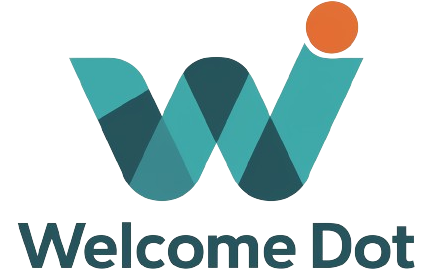
How to Become a Mortgage Lender: Step-by-Step Guide
Becoming a mortgage loan originator (MLO) can be a rewarding career path for those interested in the real estate industry and helping people achieve their dreams of homeownership. As an MLO, you will play a crucial role in supporting homebuyers through the complex process of obtaining a mortgage loan. In this comprehensive guide, we’ll walk you through the steps to become a licensed mortgage loan originator and provide valuable insights into the profession.
Understanding the Role of a Mortgage Loan Originator
Before embarking on your journey to become a mortgage loan originator, it’s essential to understand the responsibilities and impact of this profession. Mortgage loan originators act as the primary point of contact for homebuyers seeking financing for their property purchase. They guide clients through the loan application process, collect and verify necessary documents, and ensure a smooth and efficient experience.
In addition to supporting homebuyers, mortgage loan originators also serve the broader real estate industry. They work closely with real estate agents, appraisers, and other professionals to facilitate successful transactions. By adhering to strict ethical standards and maintaining financial stability, MLOs help reduce the risk of mortgage fraud and foreclosures, contributing to a healthier housing market.
What Does a Mortgage Loan Originator Do?
A mortgage loan originator’s primary responsibility is to assist homebuyers in securing financing for their property purchase. They assess the borrower’s financial situation, including income, assets, and credit history, to determine their eligibility for various loan programs. MLOs then present suitable loan options to the borrower, explaining the terms, interest rates, and associated costs.
Throughout the loan application process, mortgage loan originators gather and verify required documents, such as pay stubs, bank statements, and tax returns. They ensure the accuracy and completeness of the loan application before submitting it to underwriting for approval. MLOs also serve as a liaison between the borrower and the lender, addressing any concerns or questions that arise during the process.
Key Qualities of a Successful Mortgage Loan Originator
To excel as a mortgage loan originator, certain qualities are essential. First and foremost, MLOs must possess strong financial character and stability. They are entrusted with handling sensitive financial information and must demonstrate integrity and trustworthiness. By maintaining high ethical standards, MLOs help reduce the risk of mortgage fraud and protect both borrowers and lenders.
Effective communication skills are also crucial for mortgage loan originators. They must be able to explain complex financial concepts in a clear and concise manner, ensuring that borrowers fully understand their loan options and obligations. MLOs should be patient, empathetic, and attentive to their clients’ needs, building trust and fostering long-lasting relationships.
Mortgage Loan Originator Licensing Requirements
To legally operate as a mortgage loan originator, individuals must obtain the necessary licenses and meet specific requirements set by federal and state regulations. The Secure and Fair Enforcement for Mortgage Licensing Act of 2008 (SAFE Act) established national standards for the licensing and registration of MLOs through the Nationwide Multistate Licensing System (NMLS).
To become licensed, aspiring mortgage loan originators must complete pre-licensure education, pass the SAFE MLO test, and meet state-specific requirements. Let’s delve into each of these steps in more detail.
SAFE Act and NMLS Unique Identifier
The SAFE Act mandates that all mortgage loan originators obtain a unique identifier through the NMLS. This identifier allows regulators and consumers to track an MLO’s employment history, disciplinary actions, and other relevant information. To obtain an NMLS Unique Identifier, individuals must create an account on the NMLS website and submit the required information and documents.
| Step | Description |
|---|---|
| 1 | Create an account on the NMLS website |
| 2 | Submit required information and documents |
| 3 | Obtain NMLS Unique Identifier |
Pre-Licensure Education and Testing
Before applying for a mortgage loan originator license, individuals must complete a minimum of 20 hours of pre-licensure education courses. These courses cover essential topics such as federal and state laws, mortgage origination practices, ethics, and fraud prevention. The coursework ensures that MLOs have a solid foundation of knowledge to serve their clients effectively.
After completing the pre-licensure education, aspiring MLOs must pass the SAFE Mortgage Loan Originator Test, also known as the SAFE MLO Test. This comprehensive exam assesses an individual’s understanding of mortgage lending laws, regulations, and practices. The test consists of a national component and a state-specific component, and a passing score of 75% or higher is required on both sections.
State-Specific Licensing Requirements
In addition to the federal requirements, each state has its own licensing guidelines for mortgage loan originators. These state-specific requirements may include:
- Additional pre-licensure education hours
- State-specific testing
- Background checks and fingerprinting
- Proof of financial responsibility, such as surety bonds or net worth requirements
- Continuing education requirements for license renewal
It’s crucial to research and understand the specific licensing requirements in the state where you intend to practice as a mortgage loan originator. The NMLS website provides state-specific information and resources to guide you through the licensing process.
Working as a Licensed Mortgage Loan Originator
Once you have obtained your mortgage loan originator license, you can begin working in the field. MLOs can work for various types of employers, including mortgage lending institutions, credit unions, and banks. Some MLOs choose to work independently as self-employed professionals, while others prefer the stability and support of an established company.
As a licensed mortgage loan originator, your day-to-day responsibilities will involve interacting with clients, collecting and analyzing financial information, and guiding borrowers through the loan application process. You will collaborate with underwriters, processors, and other professionals to ensure a smooth and efficient workflow.
Maintaining Your Mortgage Loan Originator License
To maintain your mortgage loan originator license, you must meet ongoing requirements set by federal and state regulations. These requirements typically include completing a minimum number of continuing education hours each year to stay up-to-date with industry changes and regulatory updates.
Additionally, you will need to renew your license periodically, usually on an annual or biennial basis. The license renewal process involves submitting an application, paying the required fees, and providing proof of completing the necessary continuing education courses.
| Requirement | Description |
|---|---|
| Continuing Education | Complete a minimum number of continuing education hours each year |
| License Renewal | Submit renewal application, pay fees, and provide proof of continuing education |
State-Specific Guides for Becoming a Mortgage Loan Originator
While the general process of becoming a mortgage loan originator is similar across states, each state has its own specific requirements and nuances. In this section, we’ll provide a closer look at the steps to become an MLO in two popular states: Florida and California.
How to Become a Mortgage Loan Originator in Florida
To become a licensed mortgage loan originator in Florida, you must complete the following steps:
- Create an account on the NMLS website and obtain an NMLS Unique Identifier.
- Complete a 20-hour NMLS-approved pre-licensure education course, including 2 hours of Florida-specific content.
- Pass the SAFE MLO Test, including both the national and Florida state components.
- Submit an application for a Florida MLO license through the NMLS, providing all required information and documents.
- Obtain sponsorship from a state-licensed mortgage broker or lender.
- Undergo a background check and fingerprinting.
It’s important to note that if you intend to work solely as a loan processor in Florida, you must file a Declaration of Intent to Engage Solely in Loan Processing with the Office of Financial Regulation (OFR) and meet the requirements outlined in Chapter 494, Florida Statutes.
How to Become a Mortgage Loan Originator in California
In California, there are two primary licenses for mortgage loan originators: the CA-DFPI license and the DRE endorsed license. Here’s a breakdown of each:
| License Type | Description |
|---|---|
| CA-DFPI License |
|
| DRE Endorsed License |
|
To obtain either license, you must complete the required pre-licensure education, pass the SAFE MLO Test (national component), and meet the state-specific requirements set by the respective regulatory agency.
For the DRE endorsed license, you must also pass the DRE-administered examination and complete the necessary real estate education courses.
See also:
- How to Become a Mortgage Loan Originator: A Comprehensive Guide
- How to Become a Mortgage Loan Officer: Step-by-Step Guide
- How to Become a Mortgage Loan Officer: A Comprehensive Guide
- How to Become a Mortgage Loan Officer with No Experience: Tips & Guide
- How Much Do Mortgage Brokers Make? – [Your Blog Name]
